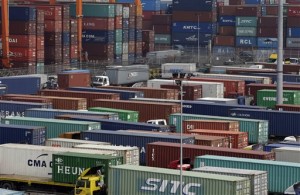The Bangko Sentral ng Pilipinas (BSP) is widely expected to temporarily pause from monetary easing and keep the policy rate at 2.25 percent when its policy-making body meets on Thursday (Aug. 20) even as the COVID-19-induced recession force lower interest rates before yearend to facilitate economic recovery.
“As it stands, the BSP has eased by 175 basis points (bps) cumulatively this year. We expect the BSP to stay on hold at the upcoming Monetary Board meeting [this] week, and we have no more rate cuts in our base case going forward,” Morgan Stanley Research said in an Aug. 14 report titled “BI and BSP to Stay Put.”
However, it said further reserve requirement ratio (RRR) cuts were likely as policymakers have a plan to cut this by 400 basis points this year (only 200 bps of cuts have happened so far), citing the comment of BSP Gov. Benjamin E. Diokno recently that he did not see any strong reason for another policy rate cut and that it was possible to keep interest rates until the end of the year.
“On the economic front, despite concerns about the impact from rising daily new COVID-19 cases and retightened containment measures [with Metro Manila and nearby provinces returning to a stricter modified enhanced community quarantine for two weeks], our base case is for the economy to emerge from the trough in the second quarter and stage a gradual cyclical recovery from here … The accommodative policy stance should also aid the cyclical recovery,” Morgan Stanley added.
For HSBC Global Research, the BSP would likely “keep its policy rate steady for now, preserving its next rate cut for any signs of further economic activity deterioration,” citing that the Philippines’ monetary authorities had been one of the most aggressive central banks globally in reducing interest rates and providing additional liquidity to support the economy.
Moving forward, HSBC last Friday said it expected the BSP to cut key rates by 25 basis points during the fourth quarter on top of a 200-point reduction in bank reserves to 10 percent before yearend.
In an Aug. 13 report, ING Bank’s senior Philippines economist Nicholas Antonio T. Mapa said the BSP was also widely expected to keep rates steady after Diokno signaled no rate cuts to come in the next two quarters.
On the other hand, Capital Economics’ senior Asia economist Gareth Leather projected another hefty 50-point cut in the policy rate to a new record low of 1.75 percent on Thursday.
“With the economy in dire straits and the virus showing little sign of being brought under control, further policy support is desperately needed. The case for more easing is clear—recent data show the economy contracted by 16.5 percent year-on-year in the second quarter and the recovery looks set to be slow and fitful. Soaring new infections of the coronavirus and the reimposition of restrictions to leisure and commerce in the capital, Manila, may even have put the recovery into reverse,” Leather explained in an Aug. 14 report titled “Malaysia bouncing back, Philippines vaccine hope.”
“Inflation is little impediment to more cuts. While the headline rate has risen in recent months, to 2.7 percent year-on-year in July, it is still below the mid-point of the BSP’s 2 to 4 percent target band,” Leather added.
For the Philippine economy as a whole, Leather said that “an effective vaccine could be a way out of the crisis” caused by the COVID-19 pandemic.


